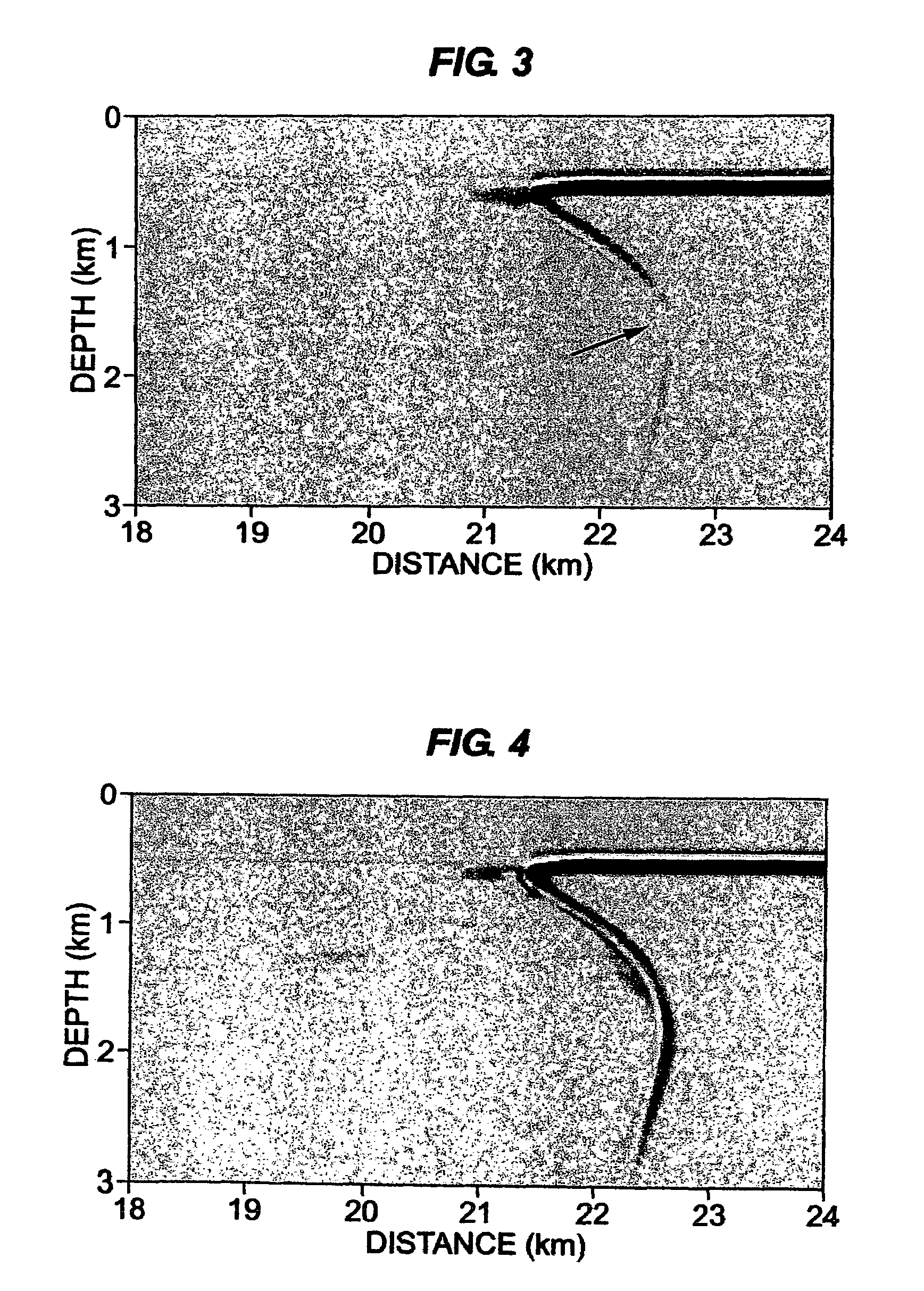One-return wave equation migration
a one-return wave and equation technology, applied in the field of one-return wave equation migration, can solve the problems of large storage and memory capacity, computational cost, and inability to produce good images of the geologic structure that contains strong turning waves and duplex waves
- Summary
- Abstract
- Description
- Claims
- Application Information
AI Technical Summary
Problems solved by technology
Method used
Image
Examples
Embodiment Construction
[0025]Turning waves are commonly recorded, at the surface, from a geologic structure where the velocity increases with depth. If the turning waves are not reflected from an interface with impedance contrast (FIG. 1), there's no contribution from the image of subsurface structure. If the turning waves occur before (or after) reflection from the interface, such as the overhanging salt flanks (FIG. 2) or vertical features, the turning waves may have a significant contribution to the image of such events.
[0026]In short-profile migration, a two-pass extrapolation, is used for both source and receiver wave fields. During the first-pass downward extrapolation, the turning wave energy at each depth z is saved for the second-pass extrapolation. The second-pass extrapolation reconstructs the contribution from the turning wave. We now obtain four volumes of wave field: PSD(x,y,z,ω); PSU(x,y,z,ω); PRD(x,y,z,ω); and PRU(x,y,z,ω), where ω is frequency and the subscripts S and R indicate source an...
PUM
 Login to View More
Login to View More Abstract
Description
Claims
Application Information
 Login to View More
Login to View More - Generate Ideas
- Intellectual Property
- Life Sciences
- Materials
- Tech Scout
- Unparalleled Data Quality
- Higher Quality Content
- 60% Fewer Hallucinations
Browse by: Latest US Patents, China's latest patents, Technical Efficacy Thesaurus, Application Domain, Technology Topic, Popular Technical Reports.
© 2025 PatSnap. All rights reserved.Legal|Privacy policy|Modern Slavery Act Transparency Statement|Sitemap|About US| Contact US: help@patsnap.com



